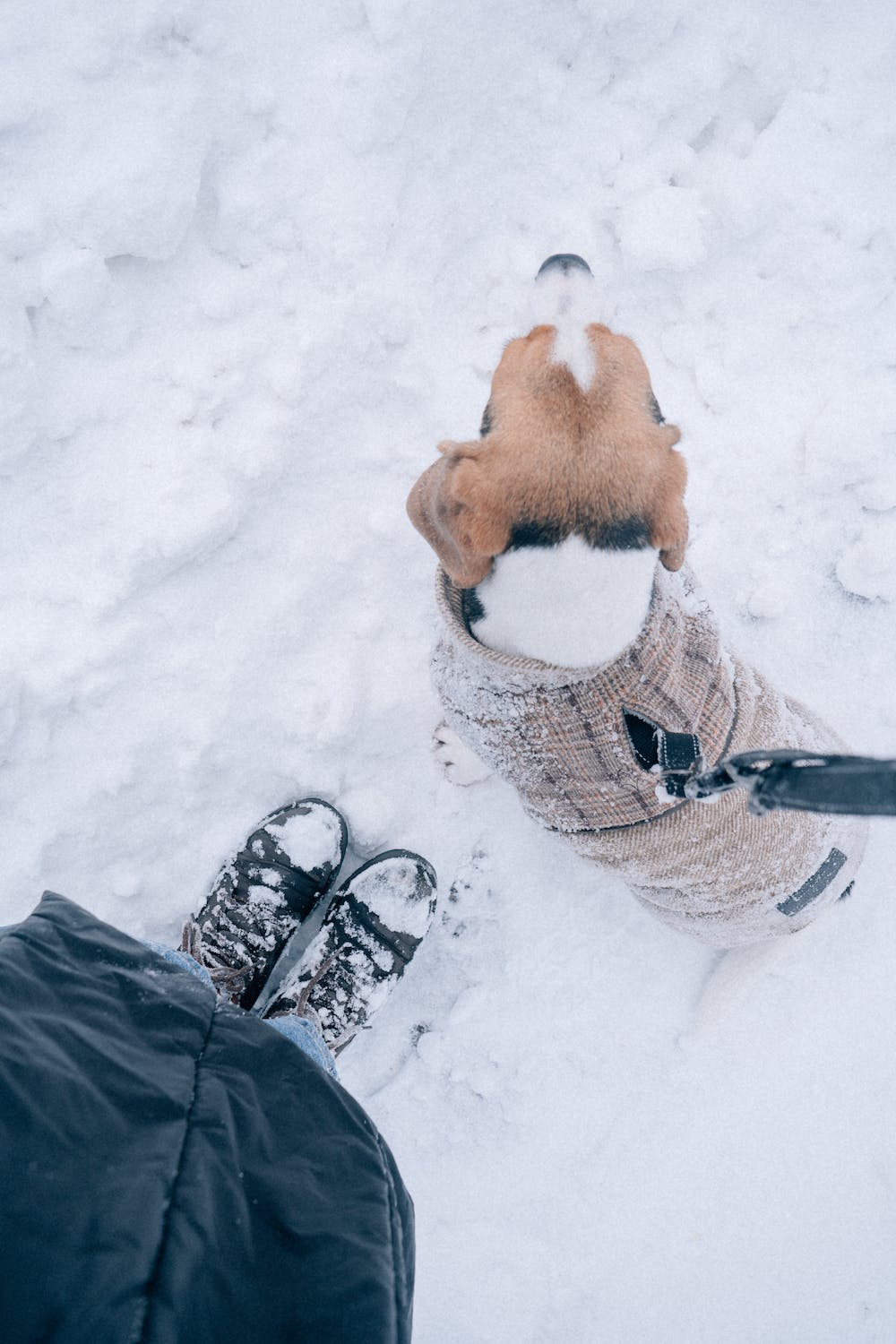Tips to keep your dog warm on winter walks
by Ontario SPCA and Humane Society | Dog Care | February 8, 2024

Walks can be the best part of a dog’s day, but with temperatures low in the wintertime, how cold is too cold for your dog?
While some dog breeds can tolerate lower temperatures, there are many breeds that aren’t as prepared for cold weather. Cold tolerance also varies between individual dogs, regardless of breed. Health conditions and age can also have an impact on how well they handle colder temperatures. Young and elderly animals are more susceptible to the cold.
It’s important to take extra precautions in the cold. Some signs to watch for include holding their paws up, walking with their shoulders hunched, or shivering. If your dog is showing any of these signs, they should be provided with a warm place to escape the cold. Some dogs can also benefit from wearing winter gear when they go outside.
Dog coats and boots – does your pet need them?
Dogs with short hair may need to bundle up during the winter months. Slender dogs are also more susceptible to frigid temperatures due to their lack of body fat or muscle mass.
The cold winter weather can make our furry friends prone to dry skin and cracked footpads. It can be helpful to have a humidifier going in your home. Check out our DIY paw balm for pets.
For more information and support tackling dry skin, read our 4 tips for your furry friend’s itchy skin this winter.
Boots are another key piece of winter gear for your dog. They aren’t just for small dogs or dogs with short hair. Even bigger, long-haired dogs can have painful ice balls form under their feet. It’s also important to remember that your furry friend may be exposed to salt and ice-melting chemicals, which they could ingest when they lick their paws.
It’s important to buy the correct sized boots for your dog. You can do this by measuring the widest part of the dog’s foot and then measuring it against the size of the boots. When you put them on, make sure to avoid getting your dog’s hair or skin caught in the zipper.
If boots are new to your dog, you should make it a positive experience for them. Introduce new things slowly, and with lots of positive reinforcement. Start by rubbing your dog’s foot with the boot and getting them used to the scent. From there you can begin introducing your furry friend to wearing boots for short periods inside, with lots of treats.
Here are a few more quick tips to keep your pooch safe this winter:
- Keep antifreeze out of reach of animals; even a small amount of antifreeze can be fatal. If you need to buy antifreeze, look for pet-safe brands.
- Use pet-friendly ice melter to prevent burns and accidental poisonings.
- Keep your dog on a leash during walks, especially in winter. With reduced visibility, and potentially unsafe bodies of water, keeping your dog on leash keeps them safe and prevents them being lost in the event of poor weather conditions. Icy roads also mean cars cannot stop as fast if a dog runs into the street.
- Keep wind, storm, and frostbite warnings in mind when making decisions about walks. As the temperature drops it may be better to go on multiple short walks instead of one long one.
- If your dog is not wearing boots, thoroughly wipe their paws after a walk to remove any salt/ice melting chemicals – in case your dog licks and ingests anything left on their paws.
Were these tips helpful? Share this blog with your friends and help spread the word about cold weather tips for healthy companion animals!
Categories
Testimonial
As an animal lover all the work you do
As an animal lover all the work you do to help ensure that every dog and cat can find their forever home that is filled with love is greatly appreciated.
